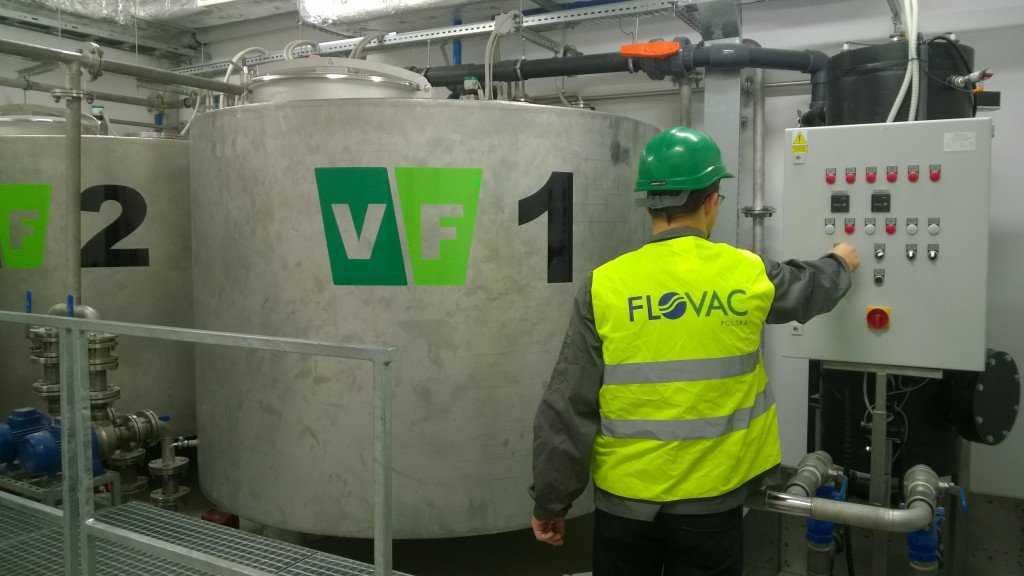Exfiltration – Why Can’t Vacuum Sewers Leak?
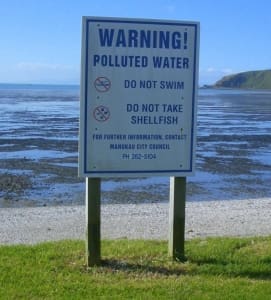 Gravity sewers have been used for hundreds of years, but they come at a much higher cost than many options reports accurately record. When selecting what type of sewerage system to use, take into account the risks associated with the solution. What happens if a sewer overflows? What happens if a storm or large wet weather event occurs. What will happen if a pipe breaks. What will be the cost and what will be the risk? A vacuum sewer could be far cheaper than you realise.
Gravity sewers have been used for hundreds of years, but they come at a much higher cost than many options reports accurately record. When selecting what type of sewerage system to use, take into account the risks associated with the solution. What happens if a sewer overflows? What happens if a storm or large wet weather event occurs. What will happen if a pipe breaks. What will be the cost and what will be the risk? A vacuum sewer could be far cheaper than you realise.
When you reflect on the damage and the cost of exfiltration from sewer networks the statement that we often hear ‘gravity sewers require no maintenance – we just put them in and leave them be” is wrong and does not reflect the true risks of not only gravity systems, but also low pressure systems as well as old septic tanks and combined sewers.
 Sewage leaks can occur for a number of reasons. the most common is leaking sewer pipes (this may be caused by tree roots or ground movement). A break in a gravity line can remain undetected for months or even years. In a Low Pressure Pump system a break will lead to a surcharging sewer which will be difficult to repair and costly.
Sewage leaks can occur for a number of reasons. the most common is leaking sewer pipes (this may be caused by tree roots or ground movement). A break in a gravity line can remain undetected for months or even years. In a Low Pressure Pump system a break will lead to a surcharging sewer which will be difficult to repair and costly.
With Low pressure systems a pipe break is easier to detect as some local TV news anchor is excitedly showing the 50 foot geyser in the middle of main street.
Overflows can also be caused by the system being inundated with stormwater which overwhelms the entire system allowing polluted stormwater to enter waterways.
A vacuum sewer piping network is leak tight, as it operates under a negative pressure any break cannot allow exfiltration to occur and as the pipe is less than 1/3 full at any time there is no surcharge.
What are the main problems if exfiltration occurs?
Health Issue’s
 In the USA the Centres for Disease Control and Prevention (CDC) and the US EPA regularly report on annual deaths due to sanitary sewer overflows. Sickness is widespread with the most common symptoms being diarrhea and nausea. This can be caused not only by drinking the water but also by swimming and eating shellfish and fish.
In the USA the Centres for Disease Control and Prevention (CDC) and the US EPA regularly report on annual deaths due to sanitary sewer overflows. Sickness is widespread with the most common symptoms being diarrhea and nausea. This can be caused not only by drinking the water but also by swimming and eating shellfish and fish.
Of greatest concern is infectious disease, such as the contamination of Wallis Lake oysters in Australia with the sewage-derived virus hepatitis.
In Baradine a small town in Australia The Department of Health reported a 30{f2ac4d1e1d40dc2e2d9280a1dfa90d854b2d8c80eba743affa37fc4ce2e16def} reduction in student sick days at the local school once a new vacuum system was installed. In far north tropical Queensland the introduction of a vacuum system led to a reduction is diseases caused by mosquitoes.
Not only is the health of the broader community at risk, there is also a risk for sewer operators needing to deal with overflows and backed up sewers.
Environmental Issue’s
In the nineties nearly 20{f2ac4d1e1d40dc2e2d9280a1dfa90d854b2d8c80eba743affa37fc4ce2e16def} of Florida’s manatee population died due to an algae bloom which had intensified due to sewer overflows.
On average 140 beaches in the US are closed or have warnings due to sewage contamination. KawaKawa Bay in New Zealand which had been a source of shellfish and a place to swim for the indigenous Maori population for hundreds of years was completely closed for ten years due to sewer overflows from a growing seaside community. It was only after a vacuum system was installed that the bay was reopened.
Sewage contamination readily degrades in the environment, but in water it can soak up oxygen from the waterway. Low oxygen levels can kill large numbers of fish and other aquatic life. Sewage also has toxic levels of ammonia that can poison aquatic life, along with many other contaminants.
Overflows contribute nutrients and sediment that encourage the vigorous growth of invasive weeds, such as willows, blackberries and privet, which often choke native species along stream channels and banks.
Aquaculture and Tourism Impact
 Owners of Marina’s know the impact of attracting houseboats and tourists if sewage is contaminating the marina area, with bad smells putting off people going to local restaurants.
Owners of Marina’s know the impact of attracting houseboats and tourists if sewage is contaminating the marina area, with bad smells putting off people going to local restaurants.
Dal Lake, one of the most scenic tourist spots in Kashmir has suffered terribly from sewage overflows from nearby towns but even worse from raw sewage entering the lake from houseboats on the lake.
Tourists going to Brazil for the Olympics and the World Cup were told not to go near the beaches. Dr Daniel Becker, founder of the nonprofit Center for Health Promotion in Rio, said: ‘In Rio, if you’re going to the beach, you’re going to sewage.’
“A sewer line clogged with grease caused raw sewage to spill into the Five Mile River , forcing the closure of shellfish beds from Darien’s Long Neck Point to Wilson Point in Norwalk.” This is a common story, found around the world where sewage overflows can affect not only health but the livelihood of businesses.
Financial and Reputational
In many countries fines are being issued to water authorities if sewage overflows occur. The Environmental Protection Agencies must report any overflows and state and federal reporting is mandatory. If there is a death related to a sewage overflow that could of been prevented then lawsuits and possibly prison could affect senior people within the wastewater industry.
Newport Bay in California had to close its beach to swimmers and divers on one of its busiest weekends due to a large sewage spill that was caused by a sewage pump stopping, flooding the streets and beach. Not only was the beach closed for 4 days, ruining many tourists holidays, it also financially hurt local small businesses including restaurants who are talking about legal action against the Costa Mesa Sanitary District. The District has now been fined $503,000 by the regulators of The Santa Ana Regional Water Quality Control Board. Sadly it didn’t end there with a smaller spill caused by tree roots blocking a sewer main causing beaches to close for three days the following year.
There are always lots of big fish down at the lake because.
The first problem, is how do you know that you have a leak or overflow.Usually it is because sewage has been spotted at the local playground/beach/street. Or because you know from flow meters at the Treatment Plant that not all the flow is reaching it. In New Delhi it is estimated that only 60{f2ac4d1e1d40dc2e2d9280a1dfa90d854b2d8c80eba743affa37fc4ce2e16def} of all sewage collected is actually reaching the treatment plant.
Even with new technologies it is difficult to find leaks when the pipes are buried 10 metres (40 feet) underground. It is also very expensive to fix that leak. Not only is there potentially a disruption to service, a closing of roads the restoration of the surface, you need to find an allocation in the budget to make those repairs.
Why doesn’t all this happen with a vacuum sewer?
 Well admittedly, homeowners can still create overflows at the home and badly maintained systems will always have problems. Modern wireless and cable monitoring systems reduce this risk considerably and is a game changer.
Well admittedly, homeowners can still create overflows at the home and badly maintained systems will always have problems. Modern wireless and cable monitoring systems reduce this risk considerably and is a game changer.
Firstly though, all vacuum mains are fairly small diameter, 125, 160, 200 dia (6,8,10 inches) and laid at a very shallow depth (Under 1.5m or 6 feet) So if there is ever a break it can be reached quickly and repaired without loss of service or expensive restoration. All pipework has to be pressure rated so it is a lot thicker than traditional sewer pipe.
Sewage is transported quickly in the pipe by air. The pipe is full mainly of air and not sewage. Large sections of the pipe are empty with sewage only collecting at lifts in the system. All pipework is under a negative pressure created at the pump station. If a pipe breaks, it sucks in and does not let any water leak out.
Once there is a leak or break in a pipe, the vacuum pump at the vacuum pump station must run longer. This creates an alarm which is transmitted to the operator. He is made aware that a leak is occurring in the system, this may be at the vacuum pump station, at a valve pit or in the pipework. A reticulation monitoring system will automatically notify the operator if there is something blocked in a valve or there is a break in the line. When pressure is monitored at each pit it is easy to detect in which section between two pits a break has occurred.
If a break has occurred, it would usually be due to an outside contractor breaking the pipe, tree roots rarely get into vacuum mains as they are pressure pipes. As a break is at minimum depth it is easy to locate and repair and no sewage would have leaked out.
 If a blockage has occurred and sewage is backing up in the pit it cannot overflow through the manhole cover as there is a partition between the sump and cover preventing sewage from flooding at this point. If it starts to back up towards the house a high level alarm in the pit sends an urgent alarm to an operator who attends to the problem. If the problem is hard to solve or an experienced operator is not available a suction truck can be used at this point.
If a blockage has occurred and sewage is backing up in the pit it cannot overflow through the manhole cover as there is a partition between the sump and cover preventing sewage from flooding at this point. If it starts to back up towards the house a high level alarm in the pit sends an urgent alarm to an operator who attends to the problem. If the problem is hard to solve or an experienced operator is not available a suction truck can be used at this point.
At the Eco Resort near the Barrier Reef in Australia a vacuum system was chosen to ensure that no sewage could affect the local ecology nor leak into the swimming lagoons which would have closed the resort.
As any leak in the pipework, must be repaired immediately, no stormwater can enter the system during wet weather events. This is common in gravity systems where breaks may go unnoticed. This means that the vacuum system can never be inundated with stormwater and wet weather infiltration is not included in design parameters.
Due to the velocity of water in the pipes there is not build up of fats or grease and wet wipes or other objects do not cause blockages at the vacuum valve nor in the pit. See Video for information.
Vacuum Sewers are considered to be the Low Cost of Sewage collection, both in capital costs and also in maintenance costs. Risk is a very important consideration.






 The municipality is located just south of the capital
The municipality is located just south of the capital  A gravity system would have required dozens of gravity pump stations due to the high water table while only 6 Vacuum Pump Stations were needed. This has reduced the energy cost of the system and also reduced the maintenance cost. As the area sometimes suffers power outages the ability to have backup generators at each station allowed for unrestricted service for homeowners. The Vacuum Pump Stations have both duty and standby pumps and are fully monitored back to base.
A gravity system would have required dozens of gravity pump stations due to the high water table while only 6 Vacuum Pump Stations were needed. This has reduced the energy cost of the system and also reduced the maintenance cost. As the area sometimes suffers power outages the ability to have backup generators at each station allowed for unrestricted service for homeowners. The Vacuum Pump Stations have both duty and standby pumps and are fully monitored back to base.


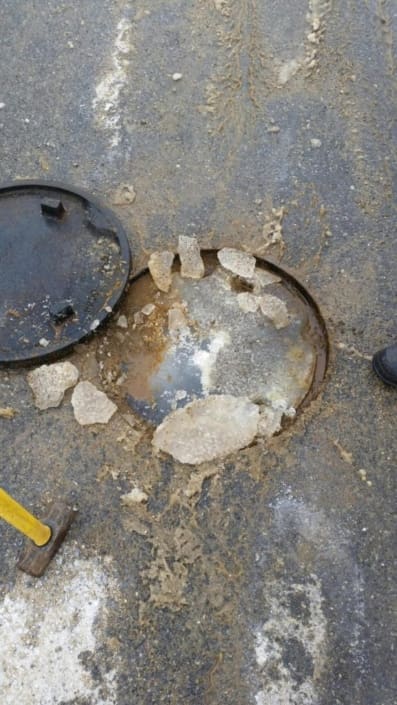 To understand some of the problems you need go no further than googling “Plum Island frozen sewers”. The main problems seemed to be related to frozen vacuum valves, water frozen in the pits, gooseneck vents submerged by snow, frozen sewage in the pipework, frozen gate valves and division valves and leaks in the line.
To understand some of the problems you need go no further than googling “Plum Island frozen sewers”. The main problems seemed to be related to frozen vacuum valves, water frozen in the pits, gooseneck vents submerged by snow, frozen sewage in the pipework, frozen gate valves and division valves and leaks in the line.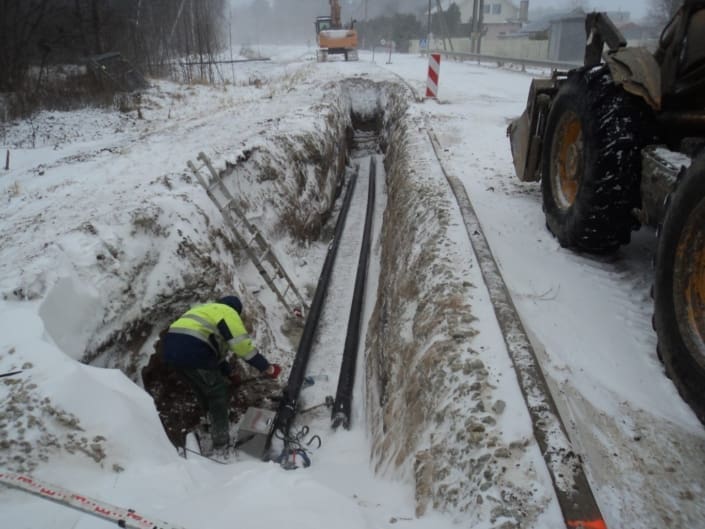 When dealing in area’s subject to extreme cold we need to take care of how deep the vacuum mains are laid, what type of division valves are used, how the collection pit is designed, where the air intake vent should be for the operation of the valve. Many of these things can be adjusted in existing systems.
When dealing in area’s subject to extreme cold we need to take care of how deep the vacuum mains are laid, what type of division valves are used, how the collection pit is designed, where the air intake vent should be for the operation of the valve. Many of these things can be adjusted in existing systems.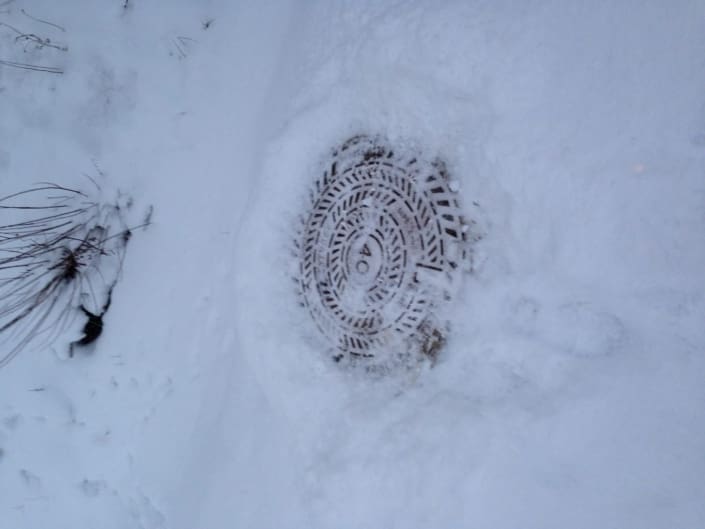 The monitoring system also makes it very easy for operators to locate the exact location of collection pits. This is also true in coastal area’s where pits can often be covered by sand during the summer months.
The monitoring system also makes it very easy for operators to locate the exact location of collection pits. This is also true in coastal area’s where pits can often be covered by sand during the summer months.
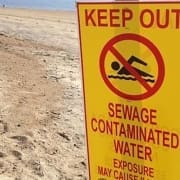
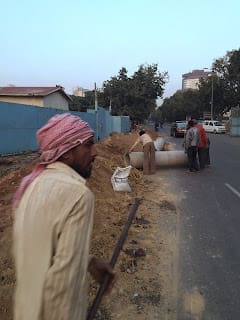 Will this information give a municipality or developer the full picture? What is being left off this analysis?
Will this information give a municipality or developer the full picture? What is being left off this analysis? Operational Costs and Risks. – Health and Safety of operators, Odour, gas explosions, fatbergs, wet wipes clogging pumps, exfiltration damage. None of these are adequately covered in assessments.
Operational Costs and Risks. – Health and Safety of operators, Odour, gas explosions, fatbergs, wet wipes clogging pumps, exfiltration damage. None of these are adequately covered in assessments. Increased Risk – is there an assessment given over possible EPA or environmental fines if a gravity system or low pressure system discharges sewerage into a sensitive area. What happens in a tourism area if the sewage overflows? How about in a fishery habitat?
Increased Risk – is there an assessment given over possible EPA or environmental fines if a gravity system or low pressure system discharges sewerage into a sensitive area. What happens in a tourism area if the sewage overflows? How about in a fishery habitat?

 The vacuum system has two vacuum networks, one for wastewater generated in the Marina (waste water) and a parallel network where bilge water, which requires pre-treatment to collect the sewage discharged in port .The network of pipes, placed around
The vacuum system has two vacuum networks, one for wastewater generated in the Marina (waste water) and a parallel network where bilge water, which requires pre-treatment to collect the sewage discharged in port .The network of pipes, placed around The vacuum system ensures the impossibility of discharges into the sea , is the most economical solution in terms of execution of work, since by its very nature design , the network of pipes need not be buried deep underground and no intermediate pumping.
The vacuum system ensures the impossibility of discharges into the sea , is the most economical solution in terms of execution of work, since by its very nature design , the network of pipes need not be buried deep underground and no intermediate pumping. Flovac also designed software to control the discharge of sewage from yachts to the Marina and can accurately invoice by litres of discharge to the sewer. As a result, Marina Port Vell prevents sewage dumped at sea and in return gives them a MARPOL certificate.
Flovac also designed software to control the discharge of sewage from yachts to the Marina and can accurately invoice by litres of discharge to the sewer. As a result, Marina Port Vell prevents sewage dumped at sea and in return gives them a MARPOL certificate.

